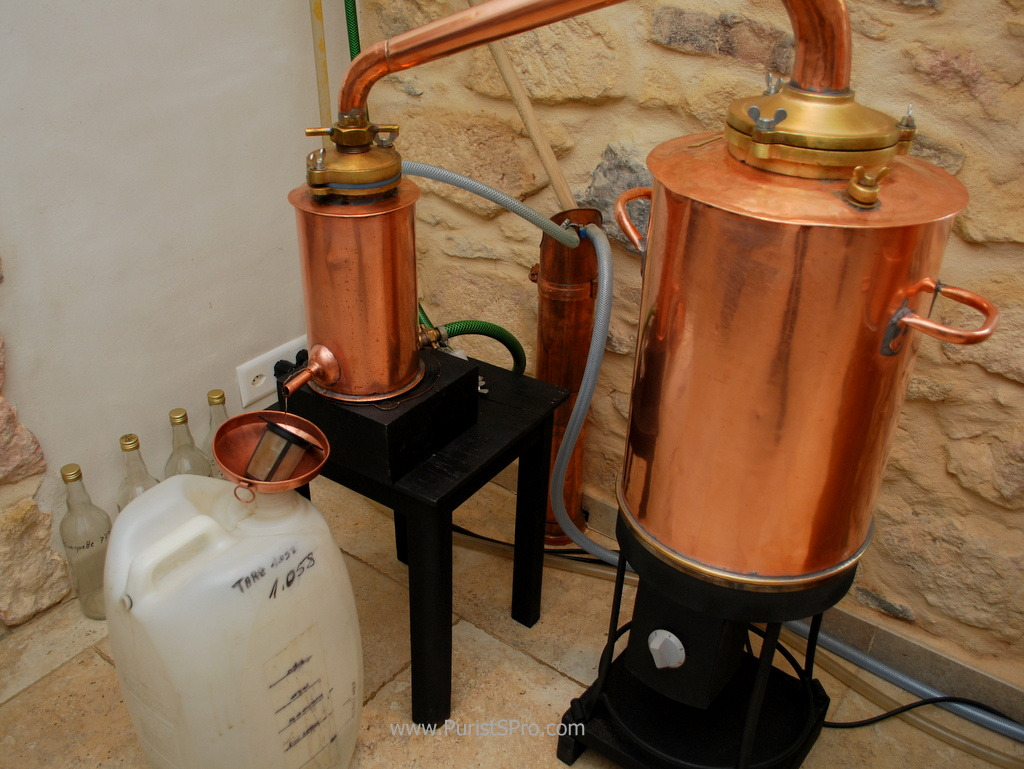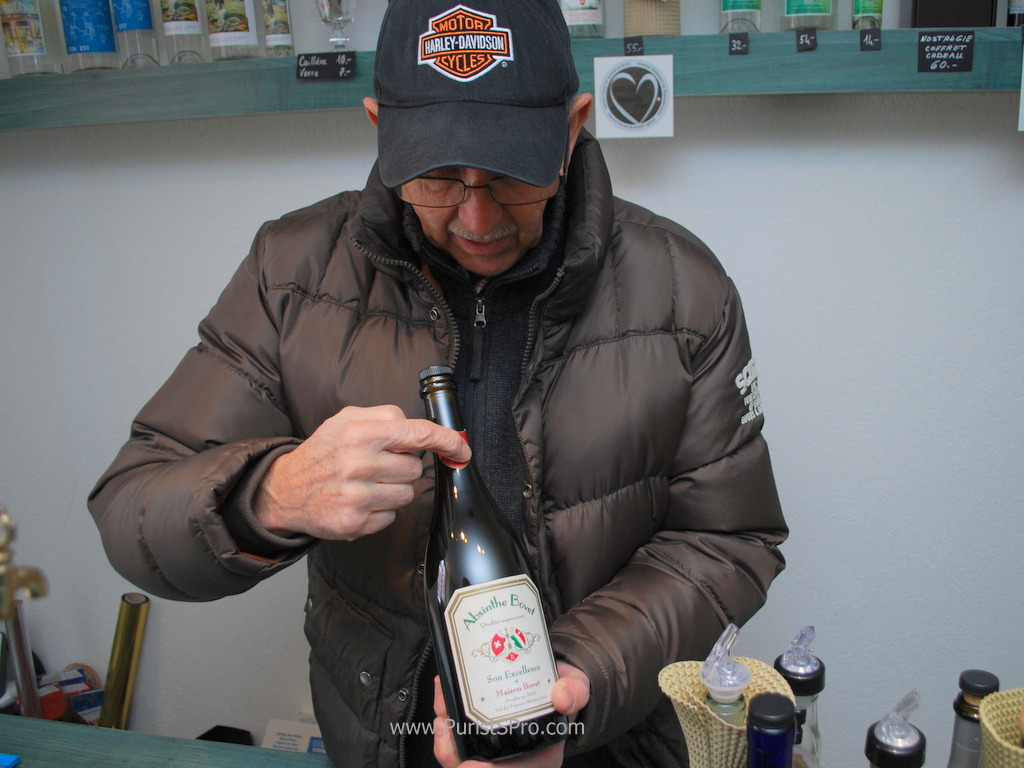
DonCorson
[AHCI]
3358

A legendary drink...
Absinthe is the legendary drink of the watchmaking areas of western Switzerland. Absinthe is an herbal drink, the main herb being wormwood, known as absinthe in French.
“The idea to distil an alcoholic drink based on the herb appeared in the
first quarter of the 19th century. The plant had been used even earlier by
apothecaries of the period for all sorts of old wives’ remedies. Historians agree
that the alcoholic drink by the name of Absinthe first appeared in Couvet in
the Val-de-Travers. The very origin of the recipe is supposed to have come from
a concoction put together by a certain Mother Henriod in the middle of the
18th century. She produced the elixir first by infusion, and later by distillation.
An advertisement in the “Feuille d’Avis de Neuchâtel” in 1769 praised a
“very good wormwood extract”.”
from the presentation at www.absinthe-interprofession.ch
h

In the early 20th century absinthe was cheap and thus drunk in large quantities thus causing, let us say, not particularly gentlemanly behaviour in some people. In 1908 in a Swiss wide vote its production was banned.
Of course this didn't really stop production. There was always clandestine production in the valleys and when the absinthe prohibition was rescinded in 2005 fully equipped producers where already on the scene.
Let's take a visit to one of those clandestine produces, now producing under the label Absenthe Bovet in Môtier. Here we see Bovets building in Môtiers. From our standing point if we could look through that building on the other side of the street we would see the building where Kari Voutilainen had his first shop in Môtier.
We enter the Bovet building and see the production at work. This still was made during clandestine times in 1978 out of copper destined normally for roofing. Today it is still the main production unit at Absinthe Bovet. On the left is the water cooled condensing unit where we see the stream of fresh absinthe at the outlet.




In this picture we see a second larger still that is used when larger quantities are required. According to Mr. Bovet, however, the quality of the absinthe sinks when it is made in a larger still. When he makes larger quantities he always uses both stills and mixes the output as that which comes from the smaller still has a better taste.

After the distillation the absinthe is "aired" in open containers for one or two weeks before it is bottled. This airing lets the tastes of the herbs combine and age.

Mr. Bovet

Absinthe is made of alcohol and a mixture of herbs, the main herb used being absinthe, wormwood in English. Mr Bovet uses a mixture of 10 herbs, 5 of which are grown in the valley where Môtiers is found, the Val de Travers. Here on the wall behind the stills we can see bouquets of those 5 herbs



The locally grown herbs are harvested by family and friends and then tied in bouquets and dried in the attic of the building. We were not able to go up and see this ourselves, I wanted to know how it smells, but here are some pictures from the photo album, also from the harvest.


Bovet makes several different absinthes with different mixtures of herbs giving different tastes. Of course we tried several and got stuck at the "Excellence" which is made with an herbal mixture featuring mostly just the wormwood flowers.

These glasses hold the 10 different herbs used in the absinthe production at Bovet. On the left the 5 local herbs, on the right the 5 non-local herbs. There are other absinthe producers that use up to 20 different herbs in their mixtures.


Here we see a vat of the wormwood flowers used in the "Excellence" absinthe. According to Mr. Bovet the preparation of the herbs makes a large difference in the taste of the absinthe. For his absinthes Mr. Bovet separates the leaves and flowers from the rest of the plant by hand and only those portions of the plant are used.


Absinthe has a long tradition and several accoutrements such as these "absinthe fountains". As the absinthe is usually very high percentage the tradition is to add water by letting it dribble out of such a fountain into your glass. Some let the water dribble over a sugar cube in an "absinthe spoon" placed over the glass.


As a special treat Mr. Bovellet us try a taste of a special brew he is making for the Art Fair in Môtier this sommer. This is still very fresh and needs some time yet to mellow before bottling.

A pleasant surprise. Now retired Mr. Bovet was a watchmaker working for Piaget in Les côtes aux fees for 40 years. He was wearing this beautiful piece.

For more info about absinthe see this very nice brochure from the Swiss absinthe producers.
http://www.absinthe-interprofession.ch/image/brochure_AIA_EN_310111.pdf
Môtier in the snow.

This message has been edited by DonCorson on 2015-02-27 08:15:16

A legendary drink...

Very nice report, Don. It was also prohibited in France.


re: lengendary
